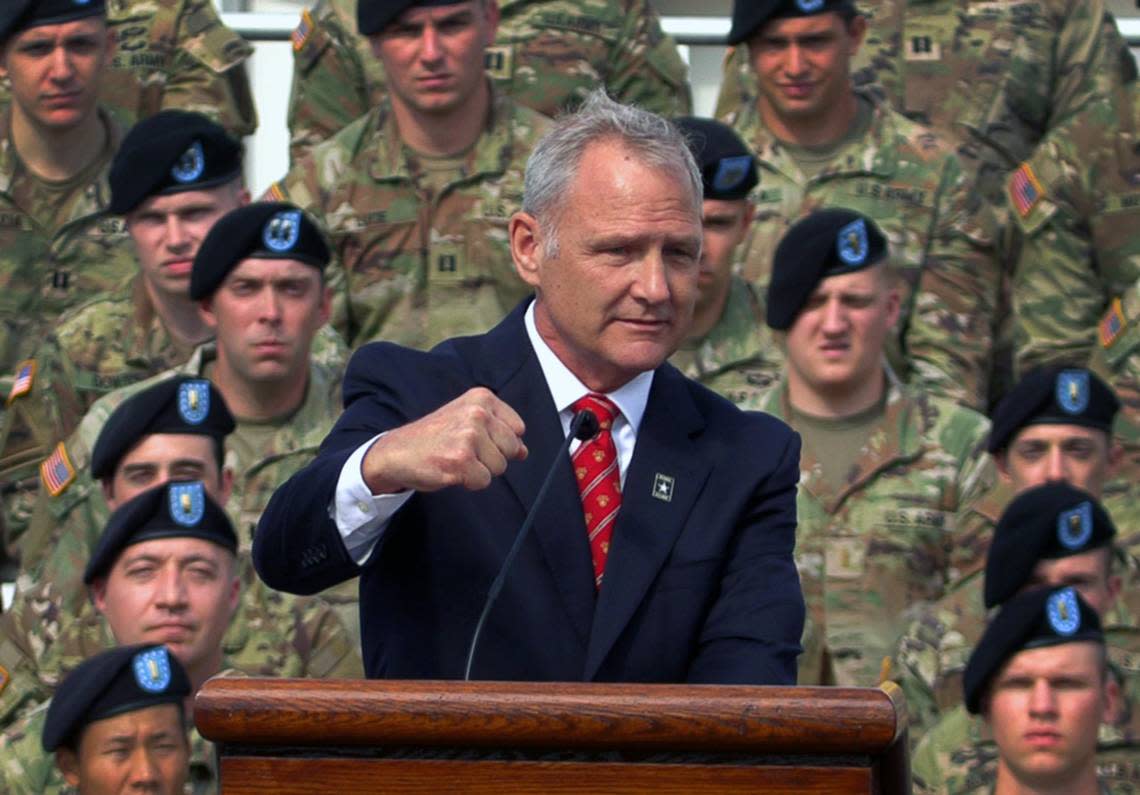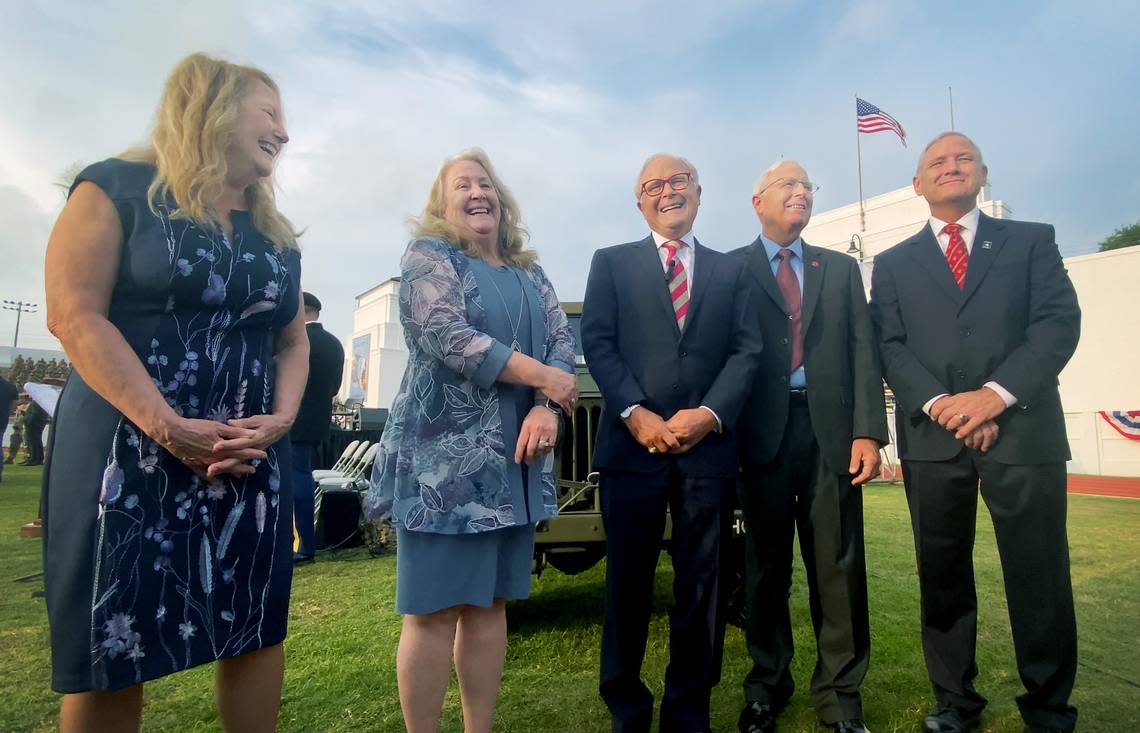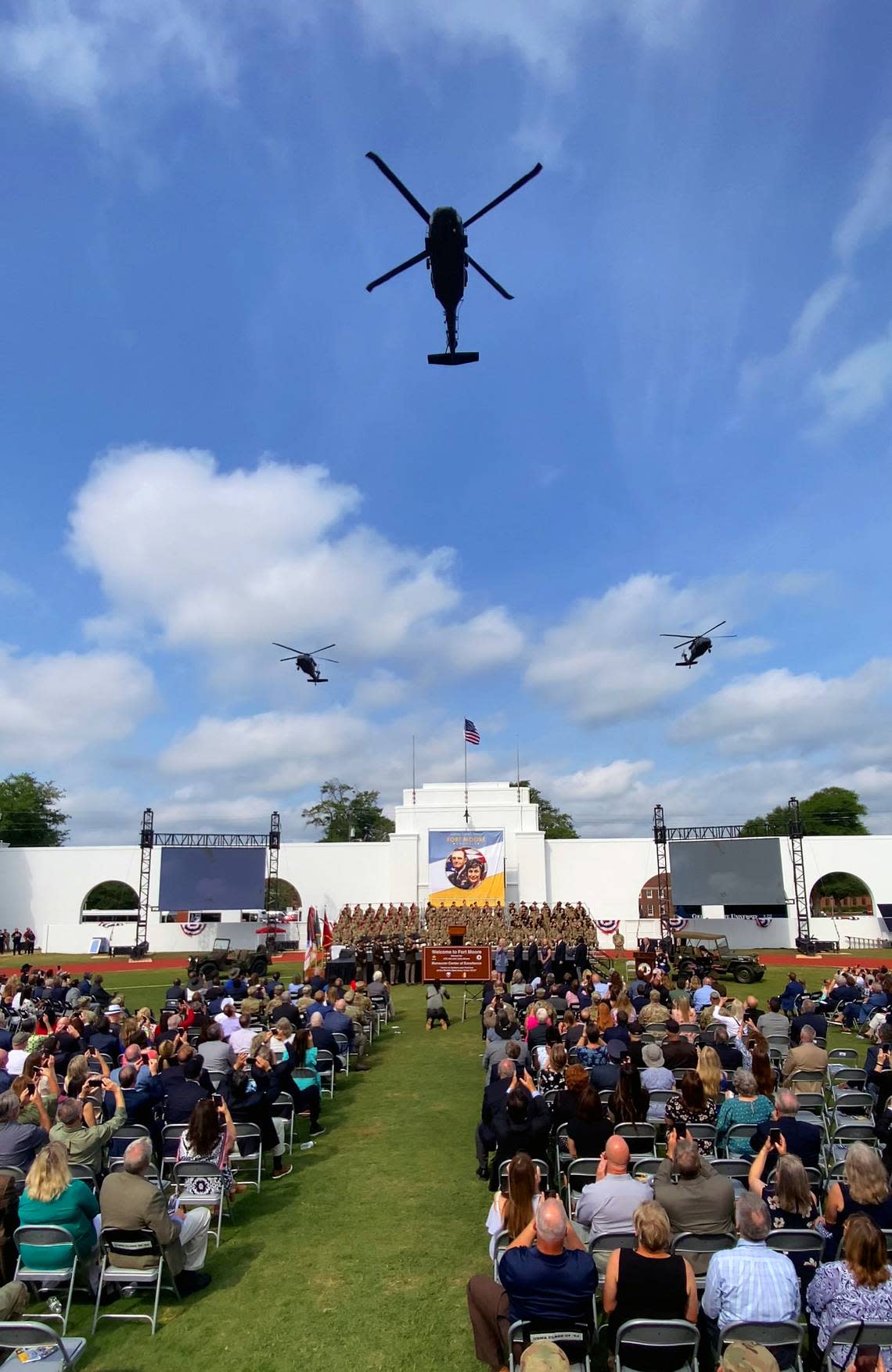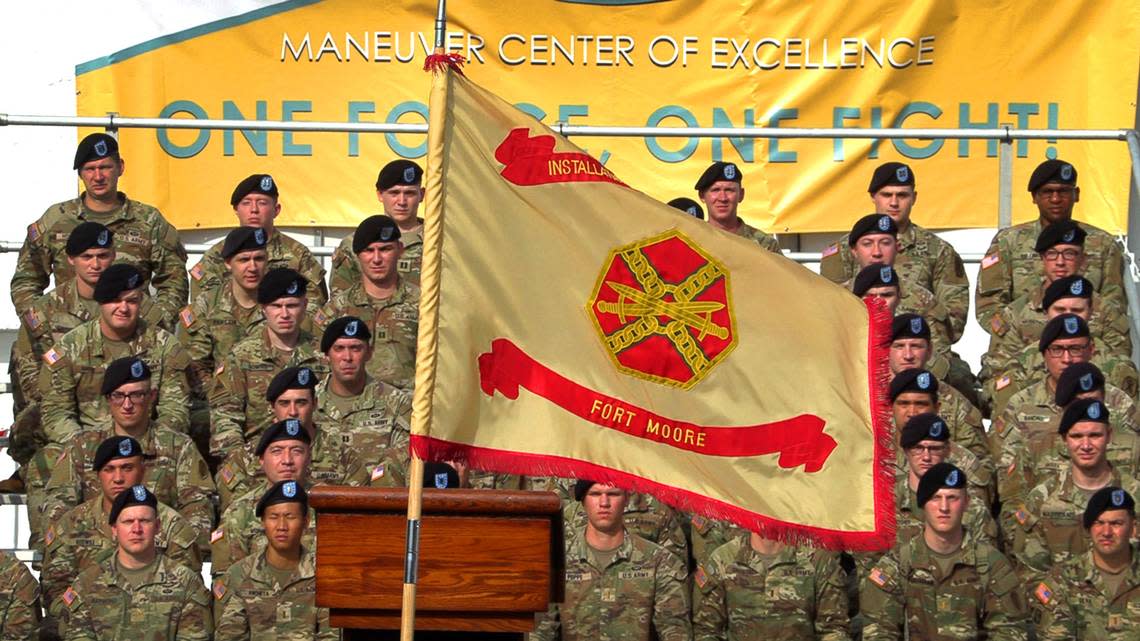Fort Benning is now Fort Moore. Name change celebrated in ceremony at Doughboy Stadium
Following a Congressional mandate that called for the renaming of Fort Benning, the base is now officially Fort Moore after Lt. Gen. Hal Moore and his wife, Julia, following a naming ceremony Thursday.
“I’ll tell them I was born at Fort Moore,” said Moore’s son, Steve.
Moore’s family said they were humbled and honored.
“This is not a family legacy, it’s the Army legacy,” Moore’s family said.
The hour-long ceremony took place in Doughboy Stadium on the base. The stadium was the location from where Moore shipped out to war, which has since been memorialized in the film We Were Soldiers.
Speakers at the ceremony included the fort’s current commander Major General Curtis A. Buzzard, retired Colonel and Moore’s former company commander, Tony Nadal, and Moore’s son, retired Colonel David Moore.
“If you have to go to war, you want to go with the best. We did,” said Nadal. He called Moore “the greatest soldier he’s ever known.”
“He was a tremendous leader. He led by example. He wouldn’t ask his men to do anything he wouldn’t do himself,” said retired Colonel and Medal of Honor recipient Walter Marm.
Maj. Gen. Buzzard had said the name change may be “the most culturally significant event of my Army career,” according to original reporting by the Ledger-Enquirer.
Fresh out of Officer Candidate School (OCS), Marm was sent to Ia Drang in Vietnam, where he served under Moore.
“We thought we were at another Little Big Horn, surrounded and outnumbered… but we had more assets than Custer had,” said Marm. The battle of la Drang become one of the Vietnam War’s most iconic battles.
As Moore fought alongside men like Nadal and Marm, his wife Julia fought for the families of those who lost their loved ones thousands of miles away.
Julia Moore, horrified that fallen soldiers loved ones were being notified by telegrams delivered by taxi drivers, personally comforted the widows and attended their funerals.
Her efforts helped change the policy of how the Army deliver death notices, which is still in effect today, according to an informational pamphlet provided by event staff.
In 2005 the Army established the Julia Compton Moore Award in her honor, which recognizes civilian spouses and their contributions.
History and celebration of the post
Cannons sounded and echoed throughout the base to begin the ceremony and a light breeze from helicopters flying overhead ended it. The stadium was filled with the camouflage of the first soldiers of Fort Moore who at times stood out of respect.
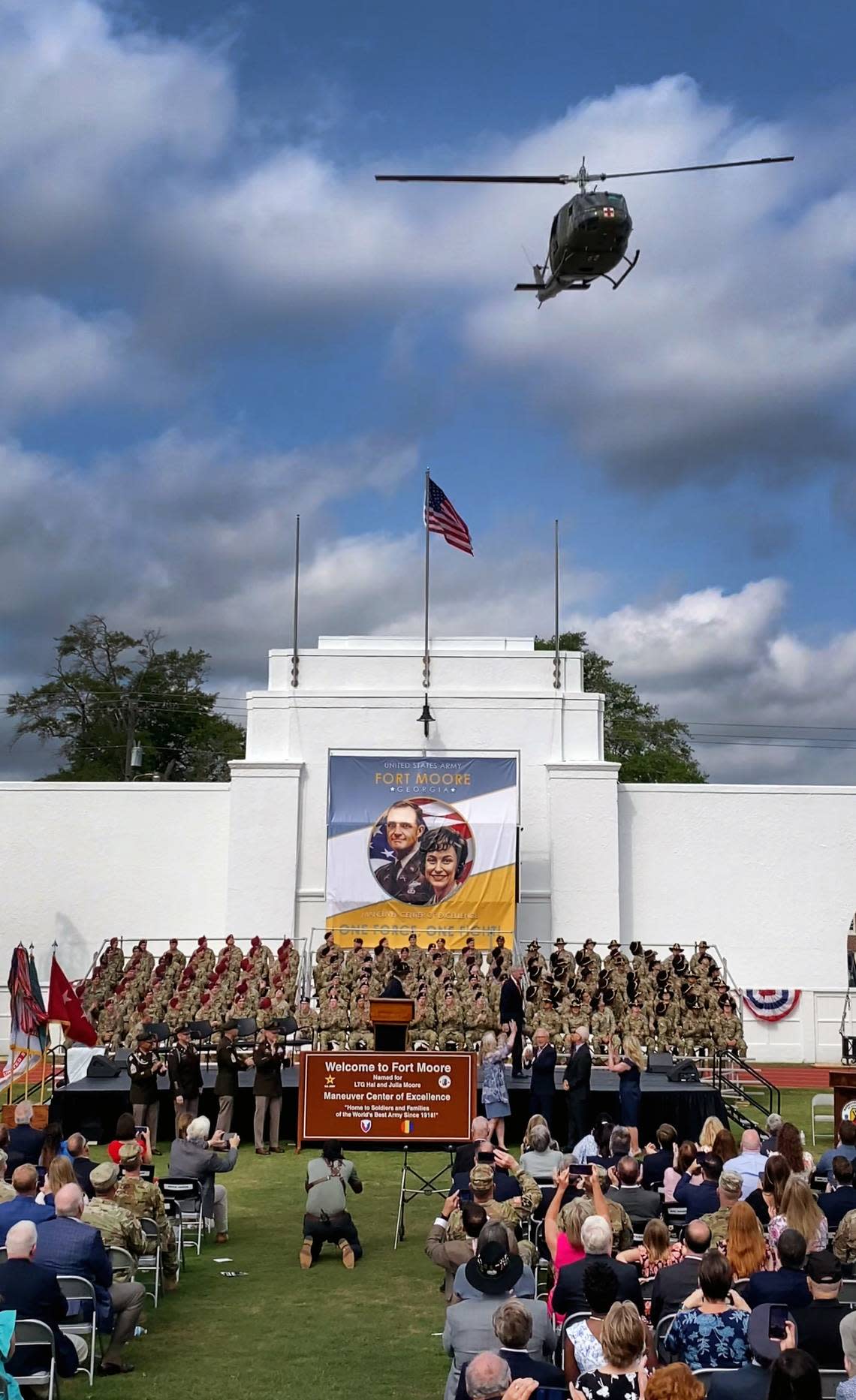
Songs that the Moore family held dear were played in their memory at the ceremony.
The fort was originally named for Henry Lewis Benning, a lawyer, politician, firebrand secessionist and Confederate general. The name change to Fort Moore followed the 2021 Defense Authorization Act, which included a congressional mandate to eliminate such tributes to leaders of the Confederacy.
Benning was an early leader in the secession movement, believing the South could not otherwise preserve slavery, in which much of its wealth was invested.
Moore fought against racial inequities throughout his career. Early on while at West Point Moore threatened to boycott a celebration if a Black graduate was excluded. Cadet Ernie Davis and his family participated like everyone else.
In 1970 Moore helped remedy a situation in Korea where Black soldiers had rebelled due to discriminatory treatment. Moore removed racist non-commissioned officers and established basic principles for fair treatment.
The renaming of Department of Defense-owned assets that honor the Confederacy — including Fort Benning — was spelled out in the 2021 National Defense Authorization Act.
After reviewing online renaming submissions and meeting with community stakeholders and military leaders at each base, the commission released a list of 87 possible names for the nine Army installations bearing Confederate names.
